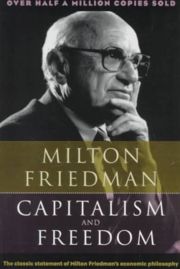Church Street, the narrow road between the Brigade road and St. Mark’s road; parallel to MG Road in Bangalore’s bustling up-market area. It is late evening on a dry summer’s day. The sun has set and the light from the many buildings, billboards and the street lights illuminate most of the street, but still leave certain sections of the street, dark.
The lady, who sells assorted dry fruits on a push cart by the parked cars, is counting the day’s earnings. There has been a good sale of the cashew today but the walnuts, chestnuts and almonds are not sold. Her daughter has not persisted in pestering the Chinese couple who had bought some cashew that afternoon to buy other items. She looks for her daughter now and realizes that it is evening and the sale of ‘rose flowers’ must have started.
A shapely young girl of about 22 years stands waiting on the narrow pavement, beside the pushcart with her back to the two wheeler parking lot of a dingy, cream colored six storey building.
Her fair complexion, accentuated with generous amounts of make-up causes the crimson lipstick to stand out. She has shoulder length brown hair with streaks of gold recently colored into them. Her ears sport a light weight, yet prominent designer ornaments which almost reach up to her shoulders.
She is wearing a knee length black skirt and a sleeveless zebra stripped top. She is a tall girl, but still wears dainty little black shoes with three inch heels. She is clutching a black handbag close to her body with her left hand, even while the strap of the handbag is slung over her shoulder. Her right hand clutches a black Nokia mobile phone.
It is getting late and he has not even bothered to call, yet. The two service messages she got from her network provider turned out to be false alarms. Her face betrays the irritation. She jerks her head away from the sight of a couple walking arm in arm.
At the other end of the street a young man on a purple colored ‘macho’ Pulsar motorbike turns into Church Street from Brigade Road. He is tall, sports an unshaven look and is rather muscular. He wears a brown leather jacket. Despite the helmet rule imposed by the government, he does not wear one; rather it is hung on his left forearm. It is uncomfortable, but it is at hand and if a police man decides to move towards him, it can be worn at short notice. More importantly, he wants to avoid ‘helmet hair’.
His face is lost in deep thought and there is a sense of urgency on it. But, somehow he is not able to bring himself to ride any faster. He pulls over to the left and is lucky to find a narrow parking slot. He manages to maneuver the bulky motorbike into the narrow space between whole rows of tightly parked two wheel vehicles but is unable put the side-stand, let alone alight from the motorbike. Irritated, he looks for someone to come help him hold the motorbike while he alights or make space for him to do so.
Another man wearing a red cap, un-tucked brown check shirt and with grease stained hands comes and starts moving the vehicle to the right of the young man. The young man can now alight, but still with some difficulty especially as he does not want to stain or tear his khaki trousers. He gives the man with the red cap two rupees and reaches for his mobile phone which is in a small leather pouch hung from his brown trouser belt.
At the other end of the street the dry fruit lady lifts her head from the counting as she hears an attractive jingle. She can’t recognize the tune which is from Mylo’s ‘Drop the pressure’, and just looks for the source of the sudden melody. The young girl looks at her mobile phone and is relieved but she waits a few moments before answering it.
“Where are you?” he asks in an Indian language before she can say ‘hello’.
“Hello!” she replies with a hint of sarcasm in her voice. “It’s been 30 minutes, you know!” then she continues in vernacular “Where are you? I am in front of Kaati Zone”
“Kaati Zone? Okay. I could not find parking space.”
“Are you still looking for parking? Why didn’t you come here directly? I told you, I would be waiting here, in front of Kaati Zone”
“No. I just found a space. I’m walking towards Kaati Zone now.” He replies leaning against his motorbike.
The guy with a red cap who is still moving an adjoining vehicle looks in the direction of Kaati Zone, searching for someone. It is quite a distance, he wonders. If only his daughter knew that this guy was going to walk all the way there, she might be able to approach him on the way.
“Why are you walking till here? Where have you parked? Anyways, come quick” she hangs up and reaches for something inside her black purse.
The lady selling dry fruits, who’s been distracted from her counting by the ringtone, now wonders how many roses has been sold that evening.
The young man is now walking towards Kaati Zone. He is now feeling very uncomfortable. He is wondering if it was worth all this. She had actually asked him to send her a Valentine day’s card by post on February 14th, even though he had met her that day! “I mean, who does that” he thought. He had half a mind to stop at the vendor selling pirated books by the street side and delay reaching Kaati Zone some more time. “I wonder if she has ever read Jonathan Livingstone Seagull” he wonders as he sees the book. He continues walking.
Meanwhile, “I am sure he will notice it. He always notices this kind of stuff” the young girl has got a Maybelline Moisture Extreme lip gloss and is contemplating if she should use it. “I am sure he has discussed how luscious my lips look, with his creepy friends.” Instead, she gets a tissue paper and deftly starts removing the gloss from her lips. “Creep!” she thinks aloud and discards the tissue paper.
He notices her standing from a distance. “Wow!” he thinks, his face shows the exclamation. “Nice choice of clothes, madam!” he thinks and hastens his pace. “What was I thinking? Someone, this ‘interesting’ has to be given more consideration!” he chuckles to himself. “And besides, she is one hell of a dancer. And look! No ugly shiny lipstick also today!” Finally!
“Hi!” he says grinning cheerily, approaching her from behind.
She has noticed him coming, but turns a little slowly and maintains a poker face. With one hand on her hip she asks him without blinking her large eyes, “How come so late?”
“Sorry, sorry!” he replies eagerly “Friday evening is bad for the parking scene, Madam”
“Madam!” she is amused by the way he always calls her that. “So what?” she asks.
“He did send me two Valentine’s Day cards, and did not act smart about it when I asked him for it” she is thinking “Surely, he would have had to stand in the queue for an hour at Archie’s gallery to buy those cards”
“Sorry, sorry. I got a little delayed and thought it would be best to park my bike in the first spot I could find. Did you wait long?”
“Hello! It has been one hour, been standing here” she vehemently argues.
He looks lost. “How stupid of me, I was worried if she read some lousy book” he thinks “How am I going to salvage this?”
“Rose for your girlfriend, sir? Red rose, Sir. Please buy!” a noisy voice interrupts him. A little girl of ten is standing between them looking up, holding a bunch of red roses with small thorns still in their long stems. The lady selling the dry fruits is looking at them with unabated curiosity.
Both of them look at the little girl and then look at each other. He looks inquiringly, she avoids his eyes and tries to look away.
“How much?” he asks the little girl.
“Just fifteen rupees for two, Sir.” She replies looking at the girl. “How many you want madam?”
She looks at him with a mischievous inquiring look. “How much are you going to buy for me, ‘Sir’” she wonders.
He hesitates. “How many do you have?” he asks the little girl in all earnest.
“I have ten rose, Sir. That will be seventy five rupees”
He shifts his focus from the flower girl to the ‘madam’ who is now giggling. “Give me the ten!” he says to the flower girl and the ‘madam’ bursts out laughing.
The dry fruit seller smiles at a person wearing a red cap who is now standing beside her.
The giggling is now interrupted by the ringtone again,
“…… gonna drop the pressure”.
‘Madam’ waits for a moment and then disconnects the call.

.jpg)












